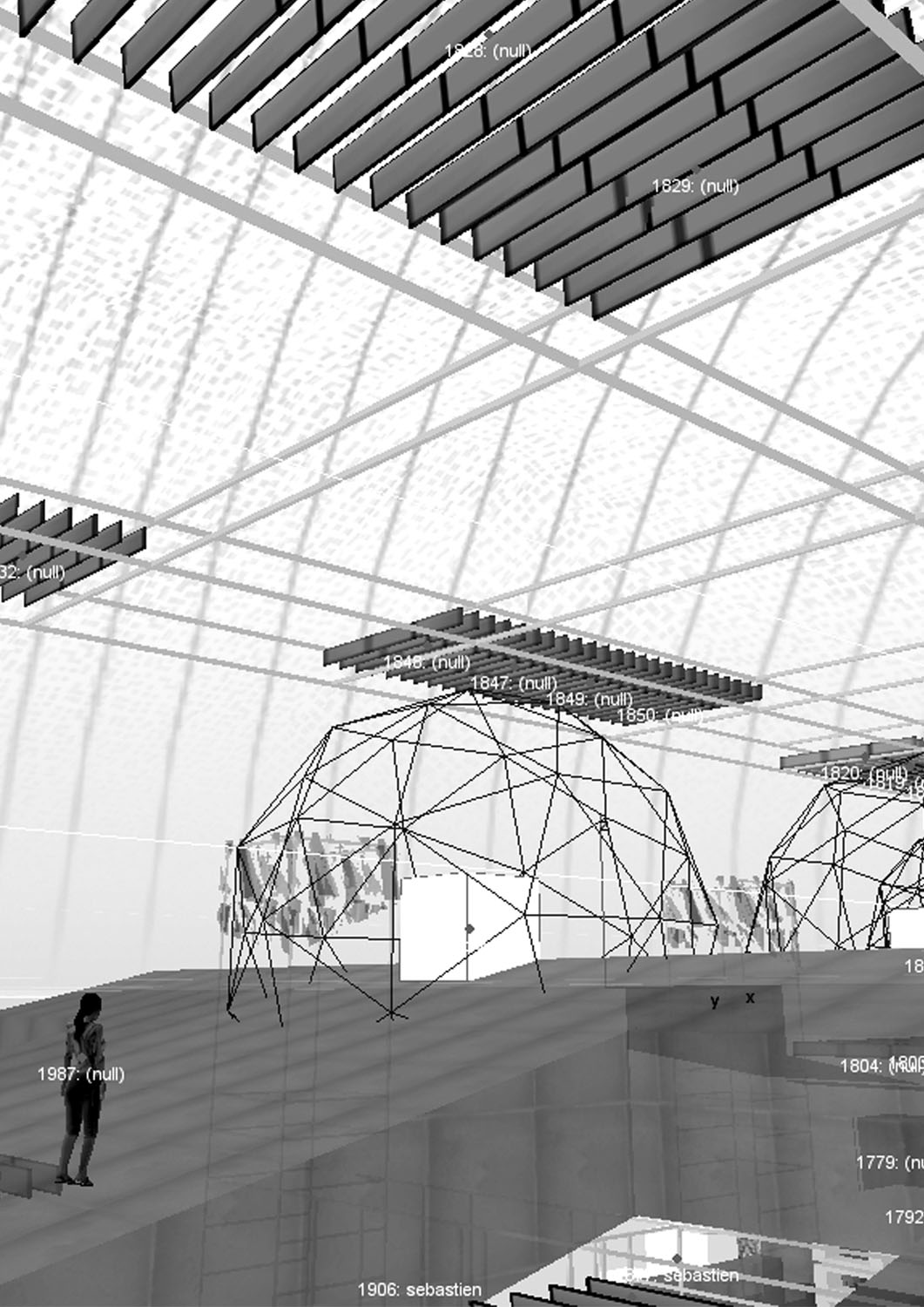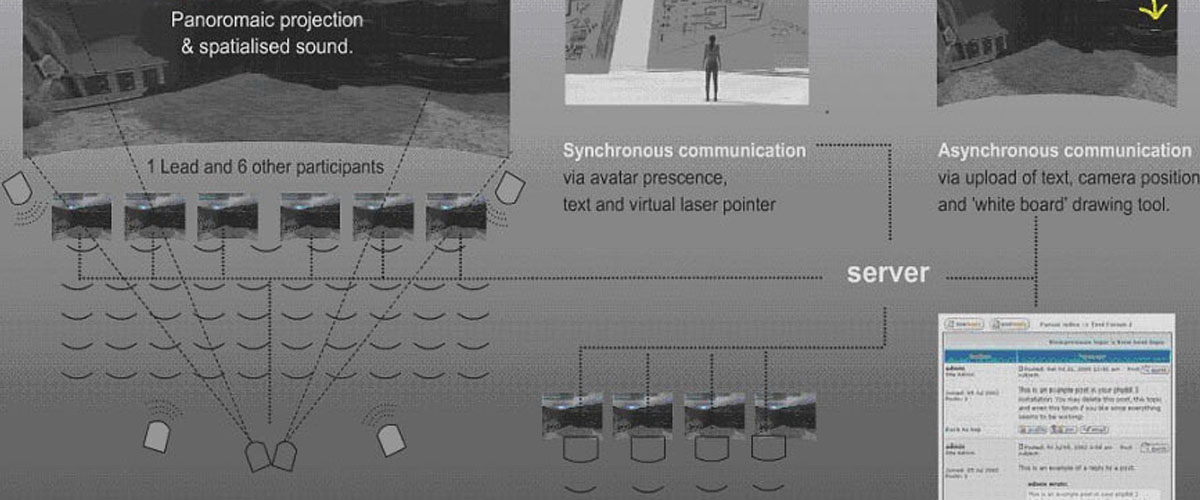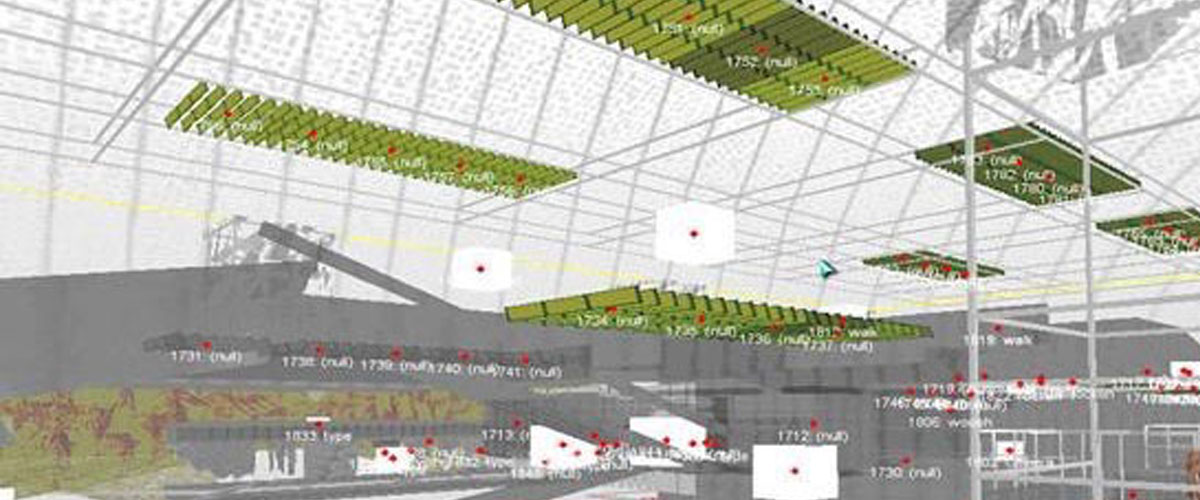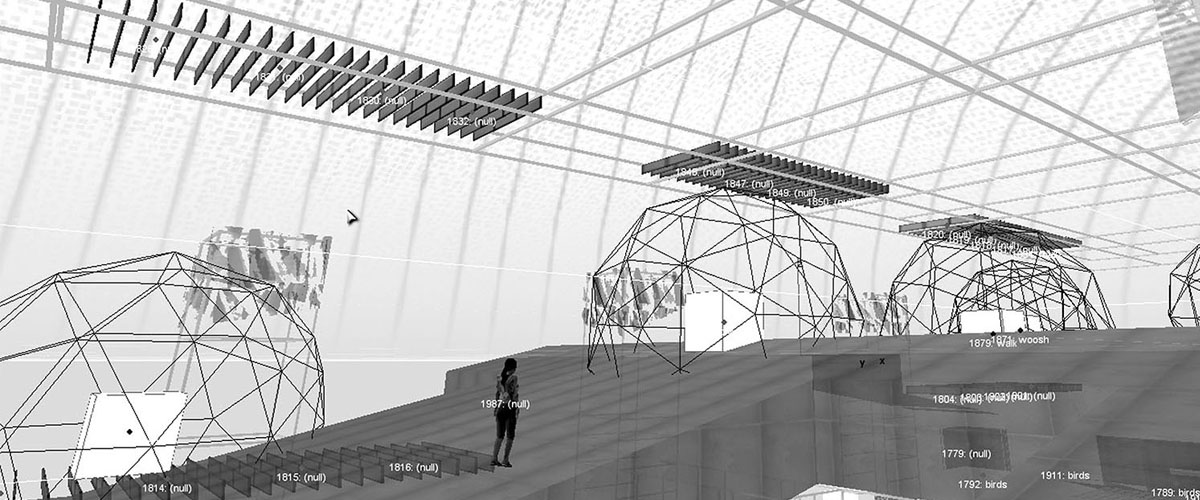A reinvention of Melbourne CBD’s laneways through the use of game engine technology
As architects and designers are key participants in decision processes impacting the future conditions of urban spaces, an expanded exploratory skillset can be a long-term agent of change. The Memory Games studio in 2002 examined the potential of the CVE (Collaborative Virtual Environments) for design generation and collaboration with equal emphasis on sound and spatial design. The brief proposed a central theme of memory and its role in the collective and individual experience of the city.
The objective of Memory Games was for the students to (re)invent Melbourne’s central business district through its forgotten and interstitial laneways, allowing an active participant to pass through imagined landscapes of experience. To engage the fabric of Melbourne, each student chose a secret location from which they designed a portal to their imagined personal memory space.






